Luca Delle Monache
Harnessing AI data-driven global weather models for climate attribution: An analysis of the 2017 Oroville Dam extreme atmospheric river
Sep 17, 2024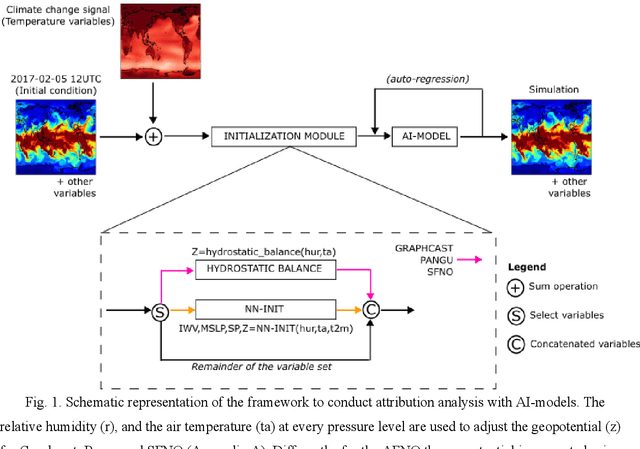
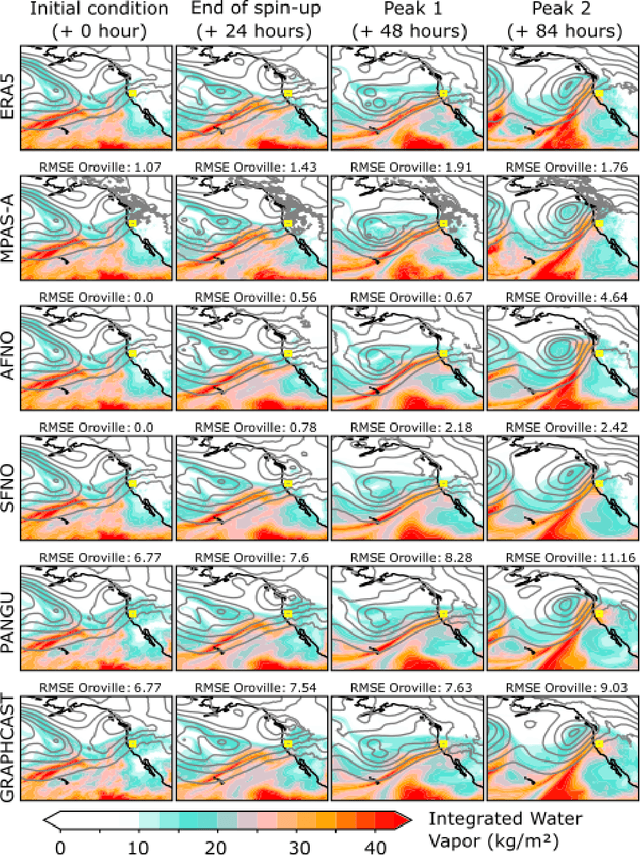
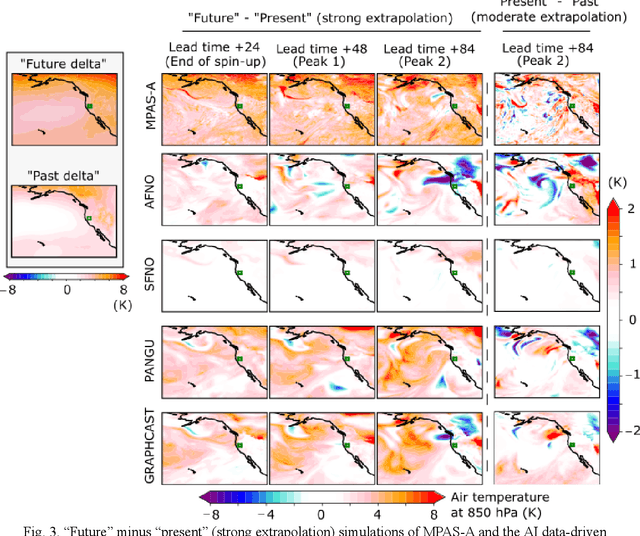
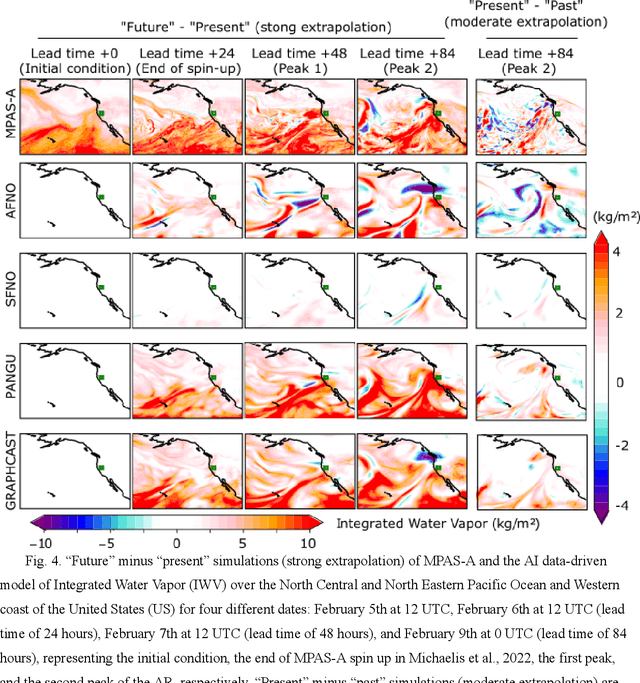
Abstract:AI data-driven models (Graphcast, Pangu Weather, Fourcastnet, and SFNO) are explored for storyline-based climate attribution due to their short inference times, which can accelerate the number of events studied, and provide real time attributions when public attention is heightened. The analysis is framed on the extreme atmospheric river episode of February 2017 that contributed to the Oroville dam spillway incident in Northern California. Past and future simulations are generated by perturbing the initial conditions with the pre-industrial and the late-21st century temperature climate change signals, respectively. The simulations are compared to results from a dynamical model which represents plausible pseudo-realities under both climate environments. Overall, the AI models show promising results, projecting a 5-6 % increase in the integrated water vapor over the Oroville dam in the present day compared to the pre-industrial, in agreement with the dynamical model. Different geopotential-moisture-temperature dependencies are unveiled for each of the AI-models tested, providing valuable information for understanding the physicality of the attribution response. However, the AI models tend to simulate weaker attribution values than the pseudo-reality imagined by the dynamical model, suggesting some reduced extrapolation skill, especially for the late-21st century regime. Large ensembles generated with an AI model (>500 members) produced statistically significant present-day to pre-industrial attribution results, unlike the >20-member ensemble from the dynamical model. This analysis highlights the potential of AI models to conduct attribution analysis, while emphasizing future lines of work on explainable artificial intelligence to gain confidence in these tools, which can enable reliable attribution studies in real-time.
Weather Analogs with a Machine Learning Similarity Metric for Renewable Resource Forecasting
Mar 09, 2021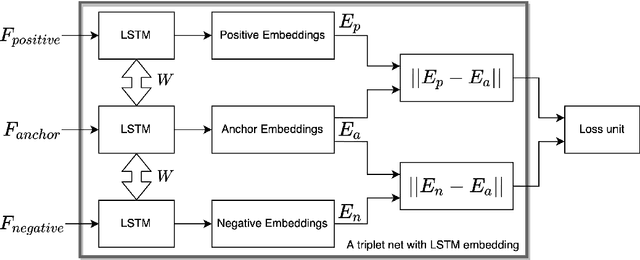

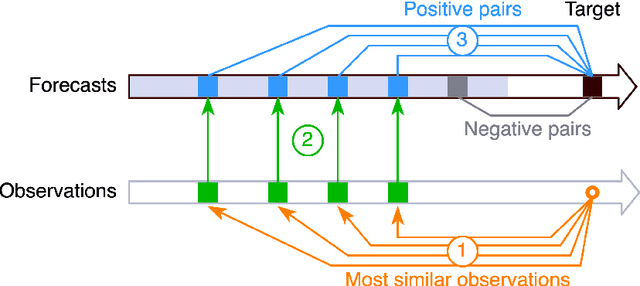
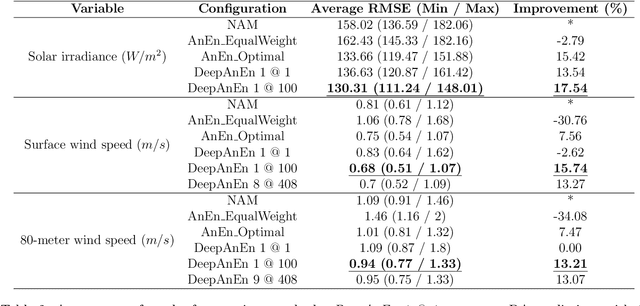
Abstract:The Analog Ensemble (AnEn) technique has been shown effective on several weather problems. Unlike previous weather analogs that are sought within a large spatial domain and an extended temporal window, AnEn strictly confines space and time, and independently generates results at each grid point within a short time window. AnEn can find similar forecasts that lead to accurate and calibrated ensemble forecasts. The central core of the AnEn technique is a similarity metric that sorts historical forecasts with respect to a new target prediction. A commonly used metric is Euclidean distance. However, a significant difficulty using this metric is the definition of the weights for all the parameters. Generally, feature selection and extensive weight search are needed. This paper proposes a novel definition of weather analogs through a Machine Learning (ML) based similarity metric. The similarity metric uses neural networks that are trained and instantiated to search for weather analogs. This new metric allows incorporating all variables without requiring a prior feature selection and weight optimization. Experiments are presented on the application of this new metric to forecast wind speed and solar irradiance. Results show that the ML metric generally outperforms the original metric. The ML metric has a better capability to correct for larger errors and to take advantage of a larger search repository. Spatial predictions using a learned metric also show the ability to define effective latent features that are transferable to other locations.
 Add to Chrome
Add to Chrome Add to Firefox
Add to Firefox Add to Edge
Add to Edge